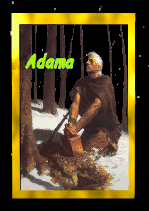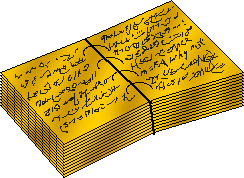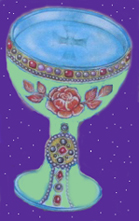Commandeur Adama
Magister Ordo Kolob - Admin

Nombre de messages : 8905
Age : 60
Localisation : Pays de Néphi - Mormon forest
Date d'inscription : 16/02/2007
Chevalier de Kolob - Vers la Sagesse
 A reçu la Lumière: 180 A reçu la Lumière: 180
 En quête du Vase Précieux et Elu: En quête du Vase Précieux et Elu:
    (150/200) (150/200)
 A la recherche du couple de Licornes du Jardin d'Eden: A la recherche du couple de Licornes du Jardin d'Eden:
    (7/700) (7/700)
 |  Sujet: Nauvoo legion Sujet: Nauvoo legion  Mar 6 Mai - 13:05 Mar 6 Mai - 13:05 | |
| 
Gen. Joseph Smith, Jr. addressing the Nauvoo Legion, shortly before his death in 1844.
The Nauvoo Legion was a private militia employed by Joseph Smith, Jr. and Brigham Young during the Latter Day Saint movement until 1870, for The Church of Jesus Christ of Latter-day Saints (the LDS Church; see also "Mormon"). The Legion was named for the city of its inception, Nauvoo, Illinois, although it only operated there for six years.
Formation
In 1839, Joseph Smith relocated his followers—the Mormons—from a hostile environment in Missouri to Commerce, Illinois which he renamed Nauvoo. Voter-conscious Illinois Democrats and Whigs (including Abraham Lincoln) passed a bipartisan city-state charter for Nauvoo in 1840. On December 16 the governor signed it into law, granting Smith and the city of Nauvoo broad powers. Among these was the authority to create a "body of independent militarymen." This force was a militia, not a police force, and it became known as the "Nauvoo Legion". By 1842, the militia had 2,000 troops, and at least 3,000 by 1844, including some non-Mormons. The Legion was organized into two regiments (called cohorts) of infantry and one regiment of cavalry. A few light cannon were also attached. In comparison, the U.S. Army had only 8,500 men in this period.
There was extensive overlap between officers in the Nauvoo Legion and a previous secretive group of Mormon vigilantes called the "Danites". Organized by Doctor Sampson Avard in 1838, the Danites were a group known for violence and subscription to a doctrine called "blood atonement." Avard was excommunicated from the Church for organizing the Danites and officers of the Church publicly disavowed any sponsorship. Exercising their influence, leaders disbanded the organization soon after its founding. However, former Danites in the Nauvoo Legion fueled the misperception by some that the militia was also a vigilante group. To the contrary, records indicate that officers of the Legion strove for an aura of legitimacy.

The Nauvoo Legion
Although the charter authorizing the Nauvoo Legion created an independent militia, it could be used at the disposal of the state governor or the President of the United States as well as for the mayor of Nauvoo. Joseph Smith himself was Nauvoo's second mayor, and the Nauvoo court martial also appointed him as highest ranking officer of the Legion, a Lieutenant General. This rank is one step above Major General which most contemporary militias employed as their commanding rank. One motive for the higher rank was to prevent Smith from being tried in a court martial by officers of lesser rank. In 1837 the Missouri militia had contemplated a court martial against Smith, an action that might have been illegal had it been carried out, as Smith was only a civilian at that time.
In the last month of his life, June 1844, Smith declared martial law in Nauvoo and deployed the Legion to defend the city.

Joseph Smith marshalling the Nauvoo Legion
[edit] After the death of Joseph Smith
The Legion survived the loss of its founder and Brigham Young became the ranking officer of the militia in August, 1844. The Legion insufficiently protected the Mormons from increased mob violence, so Young directed most of his followers out of the city while a crew remained to complete the Nauvoo Temple. Upon revocation of the Nauvoo Charter in the winter of 1844-1845, the Legion became an extra-legal militia which it would remain for much of its existence. Illinois was abandoned by the Mormons entirely by September 17, 1846 after a week of artillery shelling called the "Battle of Nauvoo".
The Nauvoo Legion survived the abandonment of its namesake. The Legion was re-organized in Iowa by Hosea Stout on September 22, 1846.
In Utah
Some legionnaires served in the 500-man Mormon Battalion for the U.S. government in 1846 as part of its campaign against Mexico. However, the Nauvoo Legion itself resurfaced to prominence soon after Brigham Young led the first band of Mormons to Utah, then called Deseret, in 1847. Under territorial law, the Nauvoo Legion became the territorial militia in 1852 although it curiously retained its name.
1849 conflicts with Native Americans in Utah County foreshadowed the 1853-1854 Walker War between the Nauvoo Legion and Indians led by Chief Walkara ("Walker"). Twenty servicemen and many more Native Americans died in the Walker War.
The Legion was used again in the so-called "Utah War" against Federal troops entering Utah in the "Utah Expedition" from 1857-1858.
At the beginning of this conflict and period of heightened tension in September 1857 Colonel William Dame ordered a brigade be formed out of the existing four battalions of Nauvoo Legion's 10th Regiment or the Iron Military District, which ultimately carried out the extra-legal atrocities of the Mountain Meadows massacre of 120 Arkansas immigrants traveling through Southern Utah.[citation needed]
After this conflict, the Federal government appointed Utah's territorial governor, and the Nauvoo Legion was allowed to exist supposedly at the command of the governor. However, it was widely known the Legion was more responsive to Latter-day Saint leaders than appointed government officials.
During the American Civil War, two units of the reorganized Nauvoo Legion were gainfully employed by the United States to protect western mail and telegraph lines from attack.
The final use of the Legion was in Utah's Black Hawk War 1865-1868 when over 2,500 troops were dispatched against Indians led by Antonga Black Hawk. (Antonga Black Hawk was a Ute and has no connection to the Illinois Sauk chief Black Hawk of the 1830s.) In 1870 the Utah Territorial governor, J. Wilson Shaffer forced the Legion inactive unless he ordered otherwise. Federal troops dispatched in response to the 1870 Ghost Dance ensured Shaffer's order was enforced. The Nauvoo Legion never gathered again, and the 1887 Edmunds-Tucker Act permanently disbanded it. In 1894, in anticipation of statehood, the Utah National Guard was organized as Utah's official state militia.
References
Allen, James B. and Leonard, Glen M. The Story of the Latter-day Saints. Deseret Book Co., Salt Lake City, UT, 1976. ISBN 0-87747-594-6.
Gardner, Hamilton (1961). "Nauvoo Legion, 1840-1845 -- a unique military organization". Journal of the Illinois State Historical Society 54 (Summer): 181-197.
Roberts, Richard C. (2003). Legacy: the history of the Utah National Guard from the Nauvoo Legion era to Enduring Freedom. Utah (?): National Guard Association of Utah, 5,9. ISBN 0-9-72849-0-6. OCLC 53168159.
Roberts, Richard C. (2004), "Utah National Guard and Territorial Militias", in Powell, Allan Kent, Utah History Encyclopedia, Salt Lake City: University of Utah Press, . Retrieved on 8 July 2007
Territorial Militia Records, 1849-1877. Series 2210. Utah State Archives and Records Service (1960-1990). Retrieved on 2007-07-08. | |
|

